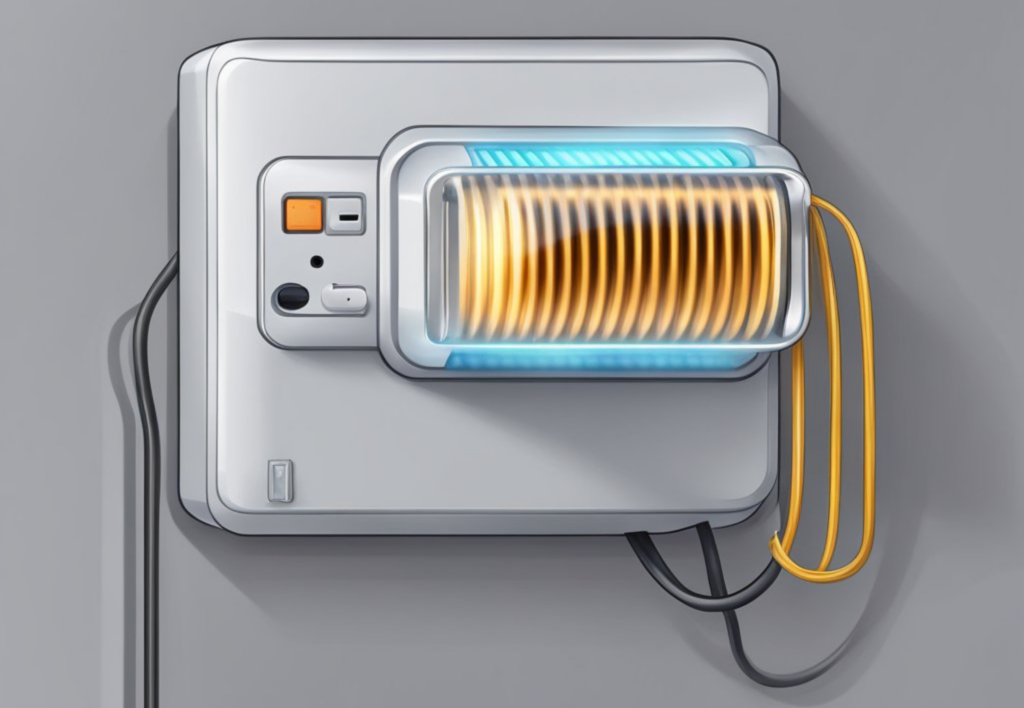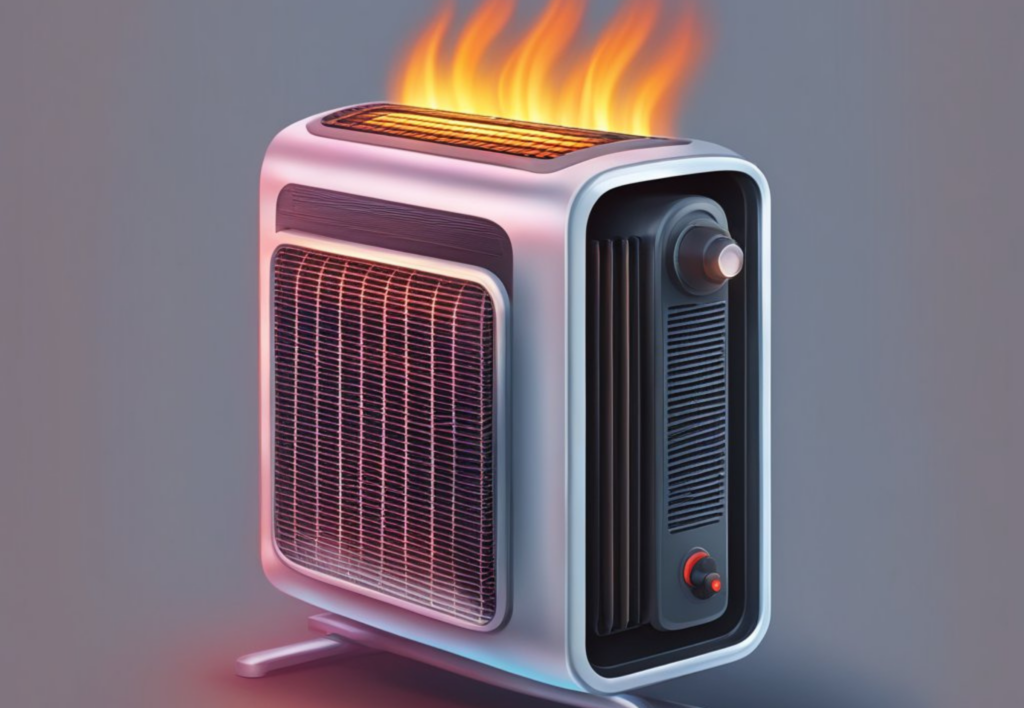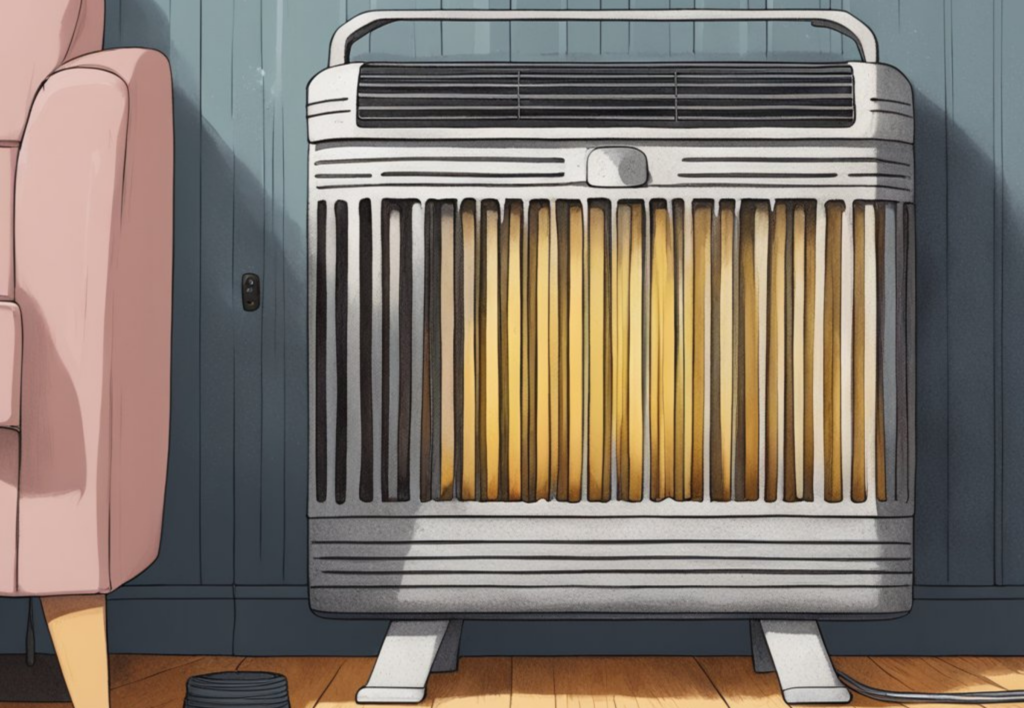Space Heater Stopped Working or Won’t Turn On? (9 Causes, Symptoms, & Fixes!)
Space heaters have become an indispensable asset to many homes, especially during those chilly months.
One common problem many users encounter is when the space heater malfunctions, leading to room temperature anomalies. It’s surprising to know that the space heater stopped working or won’t turn on at all. While this can be a source of discomfort, often it’s due to simple power supply issues such as not being plugged in or flipped on correctly.
If your space heater has stopped working completely and won’t turn on it is probably because of power supply issues, a faulty power cord, overheat protection, a tilt or tip-over switch, thermostat issues, an internal component failure, dusty or dirty components, a faulty on/off switch, a worn out internal fuse, or age-related wear and tear.
Below, we delve into the 9 most common reasons causing temperature discrepancies when space heaters might have stopped working and refuse to turn on. We’ll also offer guidance on what signs to look for and how to address each issue.
If Your Space Heater Stopped Working or Won’t Turn On Here Are 9 Common Causes & Fixes
Diving into the intricacies of space heater issues, it’s pivotal to first address any potential problems originating from the very source of the unit’s power.
Often, what might seem like a significant heater malfunction can be traced back to basic power supply issues. Ensuring that the heater has a consistent and secure power source is the first step in troubleshooting.
Let’s delve deeper into these power-related concerns and how you can address them effectively.
Power Supply Issues
Power supply inconsistencies can lead to heaters not working. It’s essential to ensure that the heater is receiving the required electricity to function.
What to Look For:
- Indicator lights not coming on when plugged in.
- No sound or vibration indicating the heater’s operation.
How to Fix It:
- Check the Plug and Outlet: Sometimes the issue is as simple as the plug not being fully inserted into the outlet.
- Use Another Outlet: Test the heater on a different outlet to eliminate potential outlet issues.
- Inspect Circuit Breakers: If the breaker tied to that outlet has tripped, it needs to be reset. If it trips repeatedly, this might indicate an overload or fault in the circuit.

Faulty Power Cord
Power cords can degrade over time, leading to potential risks and disruptions.
What to Look For:
- Physical damage like cuts, fraying, or burn marks.
- The heater turning on/off when the cord is manipulated.
How to Fix It:
- Avoid Extension Cords: Using the heater’s original cord reduces risks. If necessary, use only heavy-duty extension cords rated for the heater’s power.
- Regularly Inspect: Make it a routine to check for physical wear and tear.
- Replacement: If damage is evident, replace the cord or consult a technician for repair.
Overheat Protection
Safety features prevent the heater from reaching dangerous temperatures, but they can also be triggered erroneously.
What to Look For:
- The heater turning off unexpectedly.
- The exterior becoming excessively hot.
How to Fix It:
- Clear Surroundings: Ensure nothing is blocking the heater’s vents or airflow.
- Check for Debris: Accumulated dust inside can lead to overheating. Clean the heater thoroughly.
- Manual Reset: After cooling down, some heaters need a manual reset. This usually involves unplugging, waiting, then plugging it back.

Tilt or Tip-over Switch
Heaters are designed to shut off if knocked over to prevent accidents.
What to Look For:
- Heater not turning on when placed upright.
- Unexpected shutdowns when bumped or moved.
How to Fix It:
- Stable Placement: Position the heater on a stable, flat surface.
- Inspect the Switch: Over time, this switch might malfunction or become too sensitive. It may need cleaning, adjusting, or replacing.
- Consult the Manual: Specific reset procedures for tip-over switches may be detailed in the heater’s manual.
Thermostat Issues
A malfunctioning thermostat can prevent the heater from maintaining desired temperatures.
What to Look For:
- Heater not turning on even in cold conditions.
- Heater running continuously without cycling off.
How to Fix It:
- Cross-Verify with Another Thermometer: If the room feels different from the heater’s set temperature, the thermostat may be faulty.
- Adjust Settings: Increase the thermostat setting to see if the heater responds.
- Consider Replacement: If the thermostat is consistently misreading temperatures, it may need replacement.
Internal Component Failure
Components inside the heater, such as heating coils, can degrade or fail.
What to Look For:
How to Fix It:
- Inspect Visibly Accessible Parts: With the heater unplugged, check for visible damage or wear.
- Professional Diagnostic: If the issue isn’t evident, a technician can diagnose component failures.
- Replace Faulty Components: Using the heater’s model number, source replacement parts.
Dusty or Dirty Components
Dust and grime can affect the heater’s efficiency and safety.
What to Look For:
- Dust visible on or inside the heater’s vents.
- Reduced airflow or heat output.
How to Fix It:
- Routine Cleaning: Turn off and unplug the heater. Use a soft brush or vacuum with an attachment to clean external vents.
- Internal Cleaning: For thorough cleaning, open the heater’s casing (if designed to be user-accessible) and gently remove dust from internal components.
- Filter Replacement: If the heater has filters, check them regularly and replace or clean as needed.

Faulty On/Off Switch
The main power switch, if damaged, can prevent the heater from operating.
What to Look For:
- The switch feels loose or doesn’t “click.”
- No response when toggling the switch.
How to Fix It:
- Visual Inspection: Check the switch for any obvious signs of wear or damage.
- Continuity Test: Use a multimeter to determine if the switch is conducting electricity properly.
- Switch Replacement: If faulty, replace the switch. Depending on the heater’s design, this may require professional assistance.
Worn Out or Blown Internal Fuse
Fuses protect the heater from electrical surges but can blow or wear out.
What to Look For:
- No power to the heater after a power spike or outage.
- A visibly burnt or damaged fuse.
How to Fix It:
- Access the Fuse: Consult the heater’s manual to locate the internal fuse.
- Check the Fuse: Use a multimeter to test the fuse for continuity.
- Replace with an Identical Fuse: Always use a fuse of the same rating and type to ensure safety.
Age of the Unit
Older heaters may face multiple component degradations.
What to Look For:
- Frequent breakdowns or reduced performance.
- Noticeably outdated design or technology.
How to Fix It:
- Regular Maintenance: Older units may require more frequent maintenance to prolong their life.
- Consider Efficiency vs. Repair Costs: If repairs become frequent and expensive, investing in a new unit might be more economical in the long run.
- Safety First: Older units might lack modern safety features. Always ensure the unit is safe to use.
Helpful tips to keep your space heater working efficiently
Regular care boosts the efficiency and longevity of your space heater. Here’s a quick maintenance checklist to keep it in prime condition:
- Clean Often: Dust external vents weekly with a brush or vacuum. Monthly, clear any internal dust, if accessible.
- Stable Placement: Ensure the heater stands on a flat surface to avoid unnecessary wear.
- Cord Checks: Inspect the power cord for damages regularly.
- Thermostat Calibration: Annually cross-check and adjust the heater’s temperature readings.
- Care for Filters: Clean or replace filters based on the manufacturer’s guidelines.
- Avoid Extension Cords: Directly plug into the wall for best efficiency. If needed, use heavy-duty cords.
- Proper Storage: Clean and store in a cool, dry place during off-seasons.
- Safety Feature Tests: Occasionally check features like tip-over switches and overheat protection.
- Refer to Manual: Keep the user manual close for specific model maintenance insights.
Regular maintenance enhances your heater’s efficiency and ensures its safe operation.
Check Out Our Complete Guide to Space Heaters!
If you enjoyed this post, check out our complete guide to space heaters for more information on space heater types, safety features, troubleshooting common issues, and how to choose the right space heater for your needs!
Let Us Know How We’re Doing!
Did this expertly prepared resource answer your question?
Do you have another question about home maintenance, home improvement projects, home appliance repair, or something else?
Get more information, send in questions and keep the discussion going by contacting the I’ll Just Fix It Myself company customer service team at at 1-800-928-1490 or Email us at [email protected]
